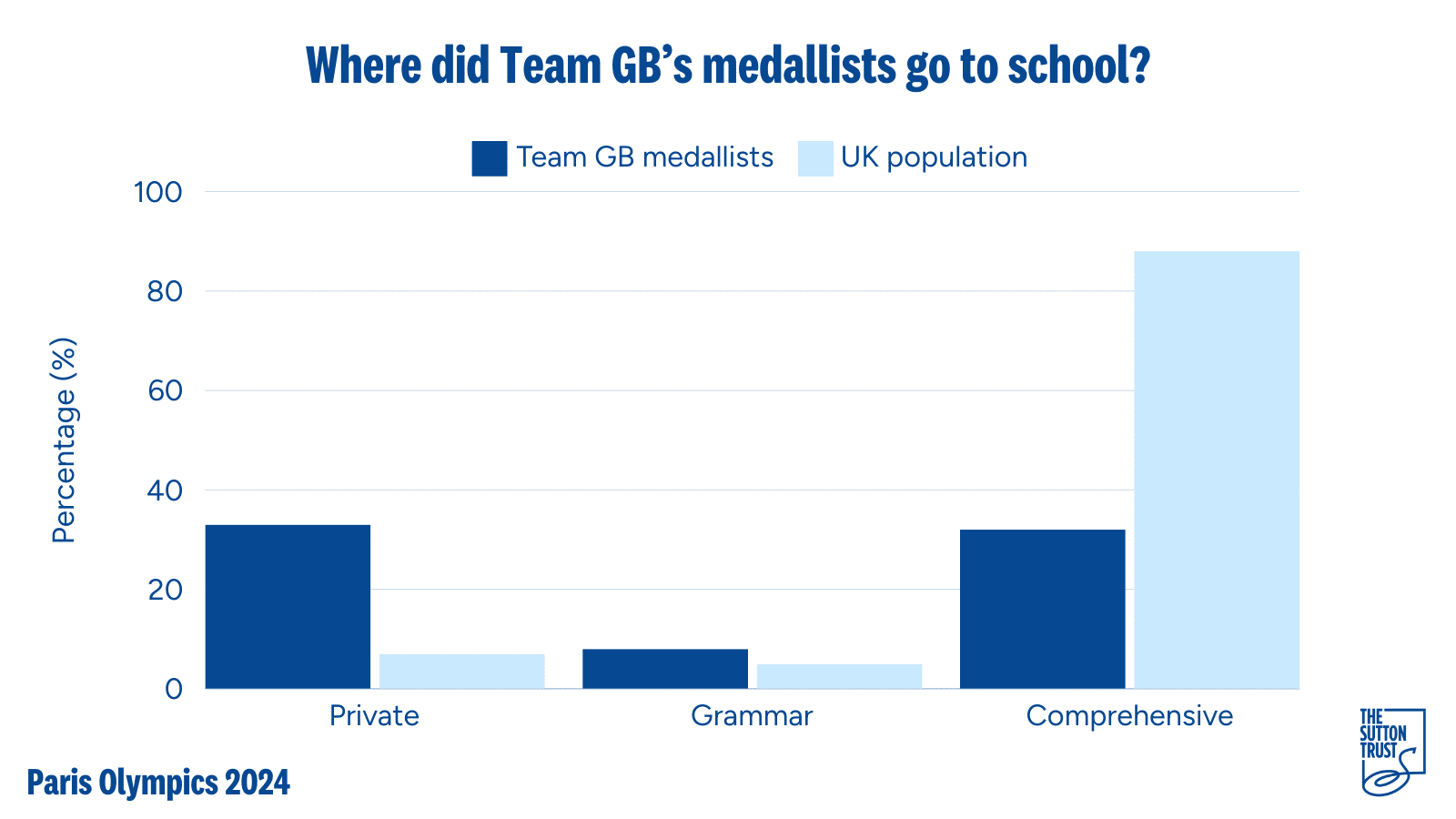News
The Sutton Trust has analysed the education backgrounds of the Team GB medallists at the Paris Olympic games. The majority attended comprehensive schools, but athletes from fee paying schools are still disproportionately overrepresented.
Key Findings:
- 33% of Team GB’s medallists attended fee paying schools, down from 40% at Tokyo in 2021.
- Over time progress has not been linear. The proportion of privately educated medallists has gone up and down, with 40% of medallists privately educated in Tokyo in 2021, 31% in Rio 2016 and 36% in London 2012.
- GB medallists are over 4 times more likely to attend a fee-paying school than the population as a whole. The proportion of top athletes who were privately educated has remained considerably higher than the proportion of the general population who were privately educated (7%).
- 52% of the country’s medallists were educated at comprehensive schools and 8% went to grammars.
- Some sports such as rowing, equestrian events and swimming were more heavily dominated by privately educated athletes.
- Eton appears to be losing its previous Olympic dominance. Between 1992 and 2016, an Old Etonian won a medal at every Olympic Games. But there were no Team GB medallists from Eton in Paris, or at Tokyo in 2021 (although an Old Etonian did win a medal for Denmark in Tokyo).
- Our top Olympians were significantly more likely to have attended private school than this summer’s men’s Euros football team (15%), and the women’s football World Cup squad in 2023 (0%).
- 60% of our top athletes attended university, an increase from the 55% of medallists in 2021, compared to about 50% of young people going on to university by the age of 30 in the wider population. 2% attended Oxford or Cambridge universities, a broadly similar proportion to the population overall (1%).
Commenting, Nick Harrison, Chief Executive of the Sutton Trust, said:
“The success of Team GB in Paris is fantastic. However, privately educated athletes remain significantly over-represented among our top Olympians.
“Private schools are typically able to invest more in high quality sports facilities, and have access to 10 times more green space than the average state school. At a time when many school leaders are having to cut back on sports and extracurricular activities due to funding pressures, it’s crucial that more is done to ensure all children have access to sports.”
Media contacts:
D: 0204 536 4632 (includes out of hours)
Notes to editors:
- The Sutton Trust looked at the school type attended by athletes, to learn more about their socio-economic backgrounds and their route to the Olympic games. We also looked at university attendance to better understand the educational pathways these athletes take enroute to the Olympic games.
- While not a perfect measure, school attendence can provide a crucial insight into the social and economic circumstances that top athletes grew up in – with private school attendance in particular strongly related to family income.
- Information on Olympian’s educational backgrounds were found from public sources. School background was defined as the secondary school attended for the majority of time between the age of 11-16. University attendance type (e.g. Oxbridge/Russell Group) relates to undergraduate study.
- School data was available for 93% of athletes. University data was available for 98% of athletes.
